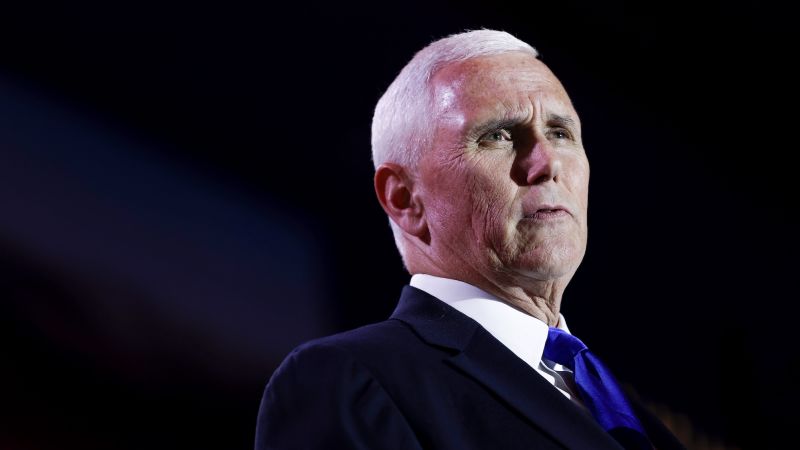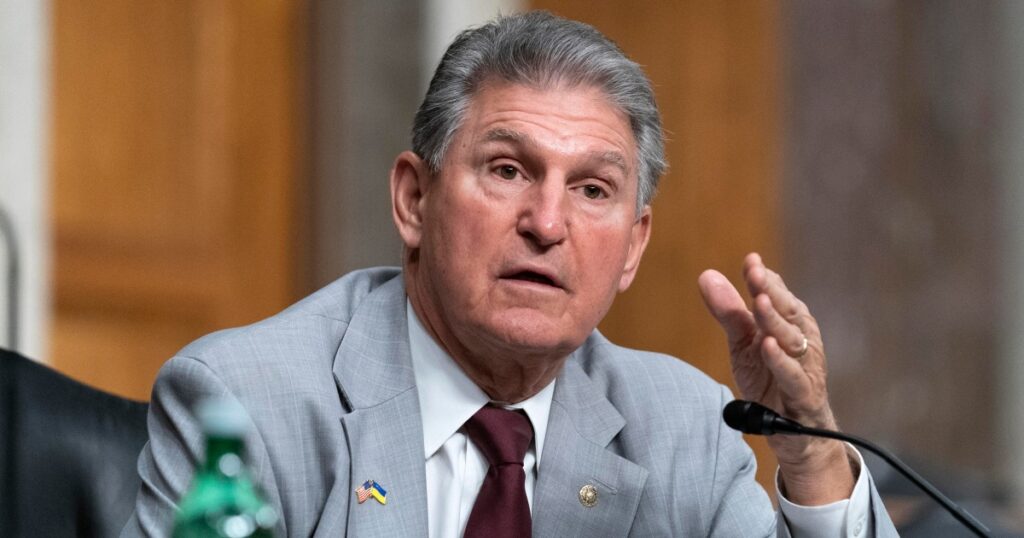Former Vice President Mike Pence has released an economic proposal to tackle high inflation. His plan includes cutting government programs, the Environmental Protection Agency, and President Joe Biden’s climate change incentives.
Pence’s four-part plan aims to halt deficit spending, bring more supply chains back to the US, increase domestic energy, and focus the Federal Reserve solely on price stability. He proposes freezing non-defense spending, repealing new spending approved by the Biden administration, and cutting unnecessary government programs. Pence also advocates for the elimination of the Education Department and reforms to entitlement programs.
His proposal identifies major savings that could save American taxpayers over $1.2 trillion. Pence’s plan would eliminate the EPA, tax credits for electric vehicles, and Biden’s clean energy credit. He would also end Biden’s student loan forgiveness program, roll back funding for the IRS, and shut down the Consumer Financial Protection Bureau.
Additionally, Pence’s proposal would rescind $66 billion from the 2021 infrastructure bill. Pence believes that government cannot spend its way to prosperity and aims to renew American prosperity by cutting wasteful spending, restoring the value of the dollar, building resilient supply chains, and achieving energy independence. He criticizes other Republican presidential candidates for not prioritizing a plan to control inflation.
Pence’s Bold Economic Proposal: Eliminating EPA and CFPB for a Brighter Future
In a move that has sparked both praise and controversy, Vice President Mike Pence has put forth a bold economic proposal aimed at streamlining government agencies and fostering a brighter future for the American economy. Pence’s plan involves the elimination of two prominent regulatory bodies, the Environmental Protection Agency (EPA) and the Consumer Financial Protection Bureau (CFPB). While critics argue that such a move would have detrimental consequences, Pence asserts that it is a necessary step towards reducing government overreach and promoting economic growth.
The EPA, established in 1970, has long been a subject of debate. While its mission to protect human health and the environment is commendable, critics argue that the agency’s regulations have become burdensome and stifling to businesses. Pence’s proposal seeks to alleviate this burden by dismantling the EPA and transferring its responsibilities to individual states. This move would not only reduce bureaucratic red tape but also allow states to tailor environmental regulations to their specific needs, fostering innovation and economic growth.
Similarly, the CFPB, created in the aftermath of the 2008 financial crisis, has faced criticism for its broad regulatory powers and lack of accountability. Pence’s proposal aims to replace the CFPB with a more streamlined and accountable agency, ensuring that consumer protection remains a priority while reducing the regulatory burden on financial institutions. By doing so, Pence believes that the financial sector will be better equipped to drive economic growth and provide greater access to credit for American consumers.
Critics argue that eliminating these agencies would have dire consequences for the environment and consumer protection. They claim that without the EPA, environmental regulations would be weakened, leading to increased pollution and health risks. Similarly, they argue that dismantling the CFPB would leave consumers vulnerable to predatory practices by financial institutions. However, Pence’s proposal does not seek to abandon these responsibilities altogether. Instead, it aims to restructure these agencies to ensure a more efficient and accountable approach to environmental protection and consumer advocacy.
Pence’s proposal is not without precedent. Throughout history, governments have undergone restructuring and streamlining to adapt to changing circumstances. The elimination of certain agencies does not imply a disregard for their missions but rather a recognition that their current structures may be hindering progress. By reevaluating the roles and responsibilities of these agencies, Pence’s proposal seeks to create a more efficient and effective government that can better serve the American people.
Furthermore, Pence’s proposal aligns with the broader conservative philosophy of limited government intervention and individual freedom. It acknowledges that excessive regulation can stifle innovation and economic growth, and that empowering states and individuals can lead to more effective solutions. By eliminating the EPA and CFPB, Pence aims to shift the balance of power back to the states and the private sector, allowing them to take a more active role in shaping their own economic and environmental policies.
While Pence’s proposal is undoubtedly bold, it is important to approach it with an open mind and consider the potential benefits it may bring. By eliminating the EPA and CFPB, Pence aims to create a more streamlined and accountable government that can better serve the American people. While critics may argue that this move would have detrimental consequences, it is crucial to remember that change is often met with resistance. Only time will tell whether Pence’s proposal will lead to a brighter future for the American economy, but it is a step towards reevaluating the role of government in fostering economic growth and individual freedom.








